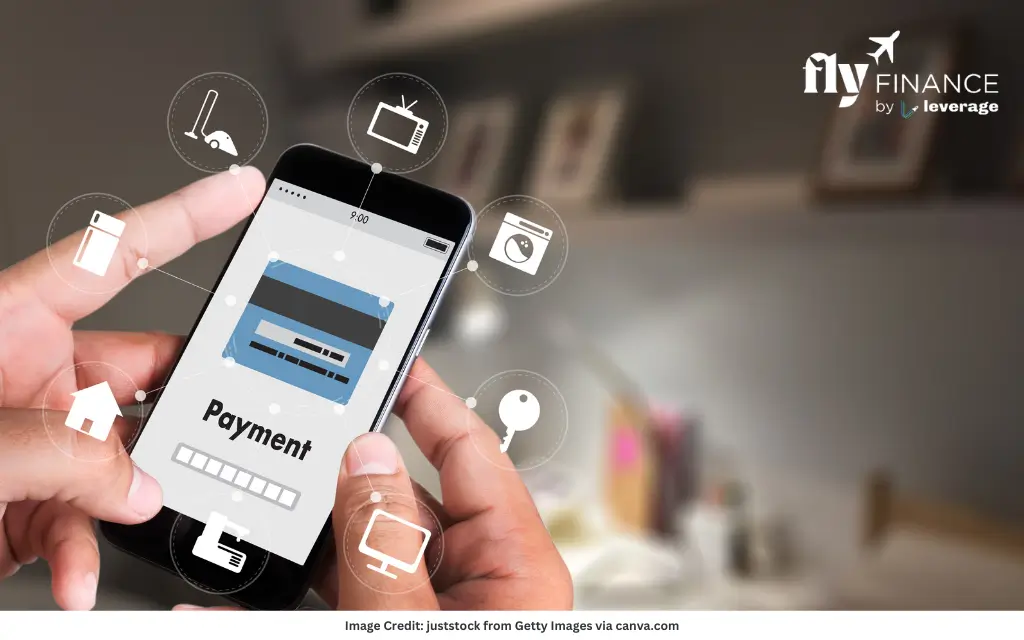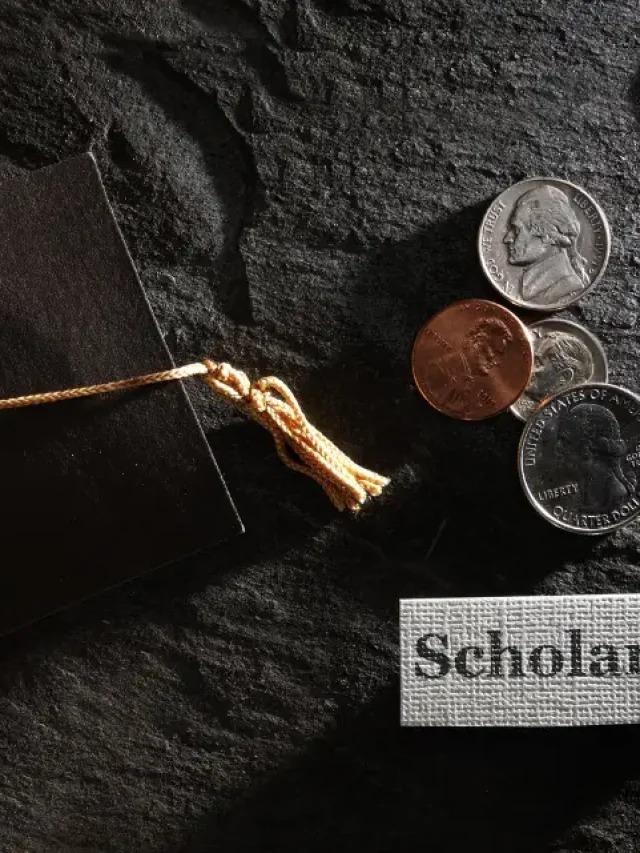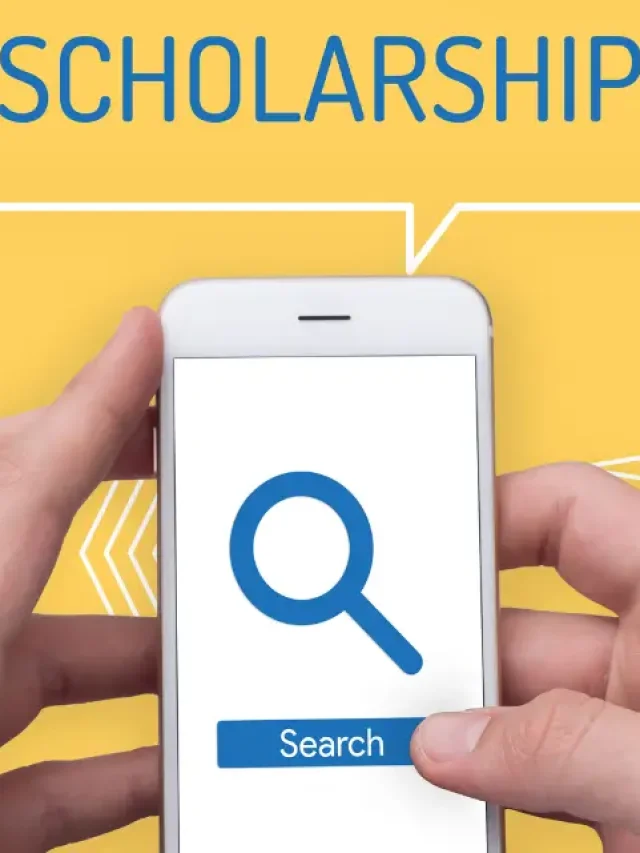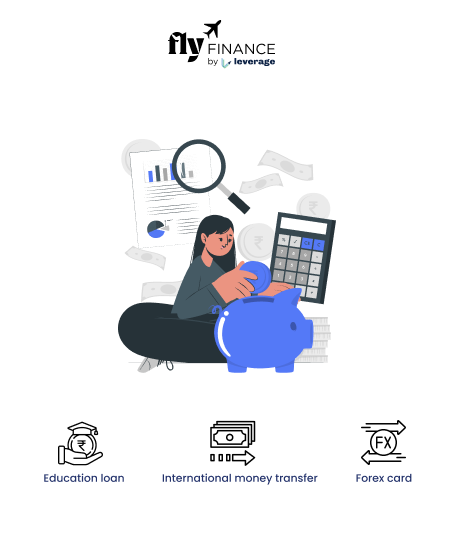MMID in Banking: Have you ever wondered how banks ensure that money transfers are quick and secure? That’s where MMID (Mobile Money Identifier) comes in, ensuring that transferring money is as fast as sending a text message.
But what exactly is MMID in banking if you use IMPS (Immediate Payment Service) for bank transfers? Why is it important? And how does it make mobile banking safer? Read this guide to know everything about MMID, how it works, why it’s used, and how you can generate one.
This Blog Includes:
What is MMID in Banking?
MMID (Mobile Money Identifier) is a 7-digit unique number issued by banks to customers for instant mobile-based fund transfers via IMPS. It acts as a secure identifier, eliminating the need to share sensitive bank details like account numbers during transactions.
Key Features of MMID:
- 7-digit number (e.g., 9015649)
- Linked to your mobile number & bank account
- Used only for IMPS transfers (not NEFT/RTGS)
- Enables quick person-to-person (P2P) payments
You should use MMID in the following situations:
- When the person you’re sending money to doesn’t use UPI (Unified Payment Interface) apps but has mobile banking enabled.
- When you want to transfer money instantly without knowing the other person’s full bank details.
- Ideal for basic mobile users or older banking systems where UPI isn’t active.
How Does MMID Work?
When you initiate an IMPS transfer using MMID, here’s what happens:
1. The sender enters the following information-
- Receiver’s mobile number
- Receiver’s MMID
- Amount to transfer
2. The bank verifies the following details:
- Checks if the MMID matches the receiver’s registered mobile number.
- Ensures the transaction is authorized via MPIN (Mobile PIN).
3. Money is transferred instantly to the receiver’s account.
Consider an example to understand how MMID works:
- You want to send ₹5,000 to a friend via IMPS.
- Instead of asking for their account number & IFSC, you just need the beneficiary’s mobile number + MMID.
- Enter details → Confirm with MPIN → Money is sent in seconds!
Also Read: SBI International Money Transfer: Benefits, Charges, Time
How to Get MMID Number?
To generate your MMID, simply log in to your mobile banking app or internet banking, go to the IMPS or MMID section, select your account, and choose the option to generate MMID. It will either be displayed on the screen or sent to you via SMS.
You can also get your MMID by sending an SMS in the format specified by your bank or by visiting your nearest bank branch.
Check out the steps below to generate an MMID number.
Via Net Banking
- Log in to your bank’s net banking portal.
- Navigate to the “IMPS” or “Mobile Banking” section.
- Generate MMID & link it to your mobile number.
Via Mobile Banking App
- Open your bank’s app.
- Go to “Fund Transfer” → “IMPS” → “Generate MMID”.
- Follow the instructions to get your MMID.
For example, if you have an account in Canara Bank, you can generate MMID by following these simple steps-
- Enter your passcode.
- Navigate to the “Profile” Section.
- Click on “Get MMID”.
- You will receive an SMS stating the 7-digit MMID code.
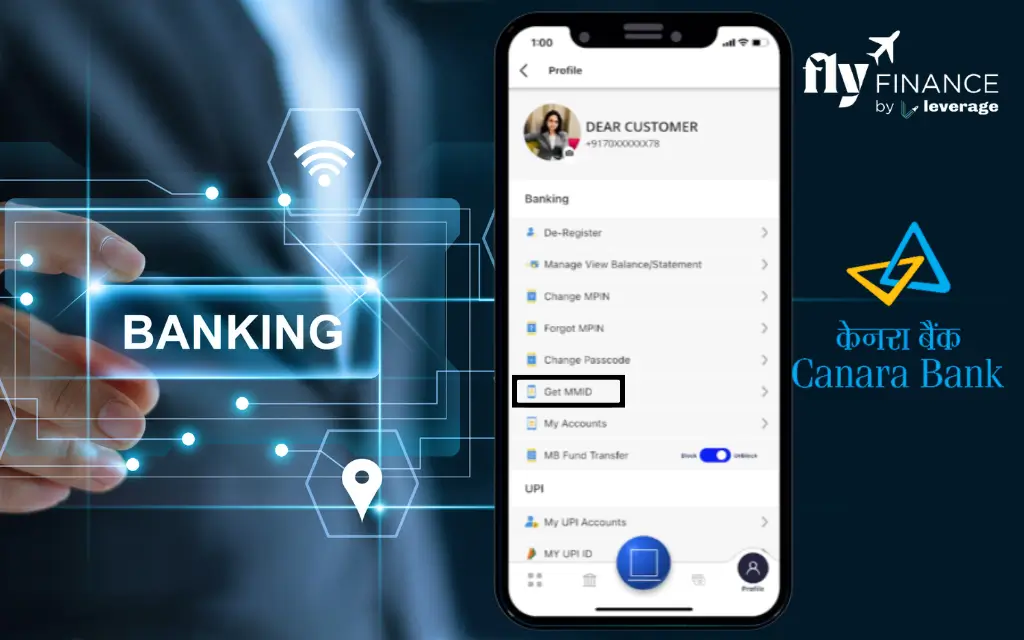
MMID in Canara App
Via SMS
- Send an SMS in this format: MMID <Last 4 digits of account number> to your bank’s IMPS service number.
- You’ll receive your 7-digit MMID via SMS.
Can MMID be Misused?
A common myth follows: “If someone has my MMID, can they withdraw money?” However, MMID by itself doesn’t give anyone access to your money, but since MMID is used for IMPS transfers, it’s important to keep it secure.
To take money from your account, the person would also need your registered mobile number and MPIN to make a transaction. So, just having your MMID isn’t enough.
Thus, it’s safe to share your MMID in the right situations (like with trusted contacts for money transfers. There are a few things you should always keep in mind to stay protected.
Here’s how to prevent fraud:
- Don’t share your MMID along with your MPIN; this combo is like your ATM PIN and should be kept private.
- Only give your MMID to people you trust, just like you would with your UPI ID.
- Be alert; banks never ask for your MMID or MPIN over calls, texts, or emails. If someone does, it’s likely a scam.
Difference Between MMID, UPI, and IFSC
If you’ve ever felt confused about whether to use MMID (Mobile Money Identifier), UPI (Unified Payment Interface), or IFSC (Indian Financial System Code) for money transfers, you’re not alone. These terms pop up often in mobile banking, and knowing when to use which one can make your life a lot easier.
Each of these tools is used for sending money, but they work in different ways and are meant for different types of transfers.
Here’s a simple breakdown to help you understand the key differences:
| Feature | MMID | UPI (e.g., PhonePe, Google Pay) | IFSC |
| Purpose | Used for IMPS transfers (mobile banking) | Used for app-based payments and bank-to-bank transfers | Used for NEFT/RTGS transfers (mainly via net banking) |
| Format | 7-digit number linked to your mobile number and account | UPI ID (e.g., name@upi) | 11-character code (e.g., HDFC0001234) linked to a specific bank branch |
| Speed | Instant (IMPS works 24/7) | Instant (24/7, even on holidays) | NEFT: Few hoursRTGS: Real-time for large amounts |
| Security | Needs MPIN and mobile number to complete a transaction | Needs UPI PIN | Needs full account number and IFSC |
Key Takeaways:
- Use UPI if both you and the receiver have UPI apps; easy and instant.
- Use MMID if UPI isn’t available, but the person has mobile banking and IMPS enabled.
- Use IFSC for scheduled or large transfers through net banking (like NEFT/RTGS).
Also Read: Difference Between NEFT, RTGS, IMPS: Which One Is Best for You?
To sum up, MMID is a secure, convenient way to transfer money instantly via IMPS—without sharing bank details. While UPI has gained popularity, MMID remains useful for:
- Non-UPI users
- Quick transfers with just a mobile number
- An extra layer of security (MPIN-protected)
If you frequently use mobile banking, generating an MMID is a smart move for seamless transactions.
Make sure to check with your bank if they auto-generate MMID or if you need to request one. Check out the FAQs below for more information.
FAQs Answered on What is MMID in Banking
MMID (Mobile Money Identifier) is a 7-digit unique number used for instant IMPS transfers via mobile banking. Instead of sharing account details, you only need the recipient’s mobile number + MMID to send money.
To get your MMID number, you can send an SMS or use net banking/ mobile app-
– SMS: Send MMID <Last 4 digits of account> to your bank’s IMPS number.
– Net Banking/Mobile App: Check under “IMPS” or “Fund Transfer” sections.
(Banks like SBI/HDFC auto-generate MMID when you register for mobile banking.)
No! MMID is a 7-digit number used for IMPS transfers which are mobile-based. However, IFSC is an 11-digit code used for making NEFT/RTGS branch-based transactions.
No! MMID is used only for IMPS transfers. You need mobile number + MMID to complete MMID transfers. On the other hand, UPI ID is used for payments made via UPI apps like Paytm, Google Pay, PhonePe, etc.
You can find your MMID in SBI via SMS. Just send MMID <Last 4 digits of account> to 9223440000. Alternatively, you can open the SBI YONO app or use Internet Banking. Navigate to IMPS and then view MMID.
You can find your MMID in HDFC bank by sending HDFCMMID <Last 4 digits of account> to 5676712. Additionally, you can also use the HDFC mobile banking app. Just simply go to “Fund Transfer” → “IMPS” → Check MMID.
Avoid it! While MMID alone can’t withdraw money, sharing it + mobile number + MPIN risks fraud. Treat it like a UPI ID, so always share it only with trusted contacts.
MMID in IMPS transfers enables quick, account-free transfers (only mobile number + MMID needed). It adds security as IMPS transactions require MPIN authorization. They also make it faster than NEFT/RTGS (no IFSC/account number required).
No, MMID cannot be used for international money transfers. MMID is designed only for domestic transactions within India, specifically through the IMPS (Immediate Payment Service) system. International transfers usually require details like the recipient’s SWIFT code, IBAN, and full bank account information.
To learn more about bank accounts for students, the best education loans, forex, banking experience for global students, or international money transfers, reach out to our experts at 1800572126 to help ease your experience with studying abroad.
Follow Us on Social Media

